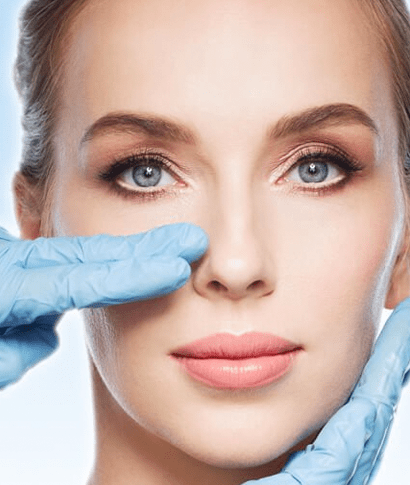Breast Cancer
The sooner the better
This year we spent in the shadow of the pandemic, we are in the days when we do not realize that we have left September, one of the beautiful months of autumn, and entered another beautiful month, October. October is also special for us women, because it is a statistical fact that even the Covid 19 disease, which affected more than 28 million people around the world and caused the death of almost one million people, cannot change the fact that breast cancer is still the most common disease among women all over the world and in our country. It is the first cause of death in cancer types and women’s cancers, so we try to raise awareness of breast cancer for each of our women by spending October as “Breast Cancer Awareness Month” all over the world, with events as the conditions allow.
Breast cancer is the main type of female cancer that develops mostly under the influence of uncontrolled hormones in the breast, usually creates a painless, irregularly circumscribed mass. Although rare, it is also seen in men. Although the incidence in women after the age of 40 has increased significantly every 10 years, it has started to be seen in young ages such as the twenties in our country due to factors such as changing diets, foods with hormones and additives, obesity and stress. One in eight women worldwide has a lifetime risk of developing breast cancer. In our country, 22345 women were newly diagnosed in 2018, and 5452 women died due to breast cancer in the same year. To all the advances in technology and treatment modalities,
When we look at the risk factors, being a woman is a risk factor in itself. When the subtypes of cancer are examined, the most common type is exposure to the hormone estrogen for a long time, since it is hormone dependent, and the onset of menstruation at an early age, late menopause, no pregnancy, obesity, and excessive use of hormone drugs in menopause are hormone-active factors. Obesity; In addition to causing disorders such as high blood pressure, diabetes, heart disease, it is also an important risk factor for breast cancer. Especially after menopause, the risk increases in the accumulation of increased adipose tissue around the belly button, since the conversion to estrogen hormone is observed in the fat cells.
When the symptoms are evaluated, symptoms such as nipple recession, bloody discharge from the breast, orange peel appearance on the breast, which everyone knows more or less, are actually the symptoms seen in the advanced stages of breast cancer. The only symptom of breast cancer in the early stage is usually a painless, irregularly circumscribed, firm mass. It may not be palpable, mostly in large volume breasts and deeply located. For this reason, breast control without interruption is important for early diagnosis. Scientific studies show that every woman from the age of 20 should self-examine once a month in the week following her menstrual period, be examined by a breast surgeon annually, and breast ultrasonography if necessary, and annual mammography examinations after the age of 40 reduce breast cancer-related deaths by 30%. has also been proven.
The main imaging method used in screening programs for breast cancer is mammography. However, it should be done with a doctor’s examination once a year after the age of 40 regarding breast structure and fertility age. Lesions that are the precursors of breast cancer and go with calcification along the canal in the breast are detected by mammography. In very dense breasts, we usually add breast ultrasonography to imaging for areas that mammography cannot see. Breast ultrasonography is the main imaging method in women under 40 years of age. When any suspicious mass is seen in the breast examination and imaging, it must be named with a thick needle biopsy so that we can decide whether to follow the mass or switch to the cancer protocol.
As in every cancer, the type and duration of treatment to be staged in breast cancer is very important for the follow-up, the drug protocol to be used, and life expectancy. When we say stage 1, we talk about cancer that is only caught with a mass in the breast and has not even spread to the armpit, while when we say stage 4, there is spread to distant organs. With early stage treatment, a healthy life is possible for many years after the disease, but when it spreads to distant organs, it becomes fatal as a result of the deterioration of the functions of these organs. When the diagnosis is made in the early stage, the interventions to the patient and the breast are also smaller and less traumatic. First of all, after the surgery, drug therapy, which we call chemotherapy, and radiation therapy, which we call radiotherapy, are necessary according to the patient, but in advanced stages, chemotherapy is definitely done first and then the need for surgery is evaluated after calculating the profit and loss. Nowadays, in breast cancer that is caught at a very early stage, the breast of the patient is mostly preserved, only the cancerous area is removed, the lymph nodes in the armpit, which we call axillary dissection, are removed, and the arm swelling and loss of function that may follow in the future are minimized. If there is no recurrence during the close follow-up period of one year, there is no difference between a woman who has had breast cancer and a woman who has not. When caught in advanced stages, breast cancer exceeds the axillary lymphatic pathways, It also metastasizes to vital organs such as bones, liver, lungs and brain via blood and causes death. This is why, with the help of all technological advances, we can detect a possible breast cancer early and live long and healthy years after the necessary treatments, by checking ourselves every month, together with the annual physician control and the imagings directed by our physician. Let’s not forget that the sooner the better… By checking ourselves every month, together with the annual physician check-up and the imagings directed by our physician, we can detect a possible breast cancer that may happen to us early and live long and healthy years after the necessary treatments. Let’s not forget that the sooner the better… By checking ourselves every month, together with the annual physician check-up and the imagings directed by our physician, we can detect a possible breast cancer that may happen to us early and live long and healthy years after the necessary treatments. Let’s not forget that the sooner the better…
Breast Cancer Awareness Month -Istanbul Surgery Hospital







